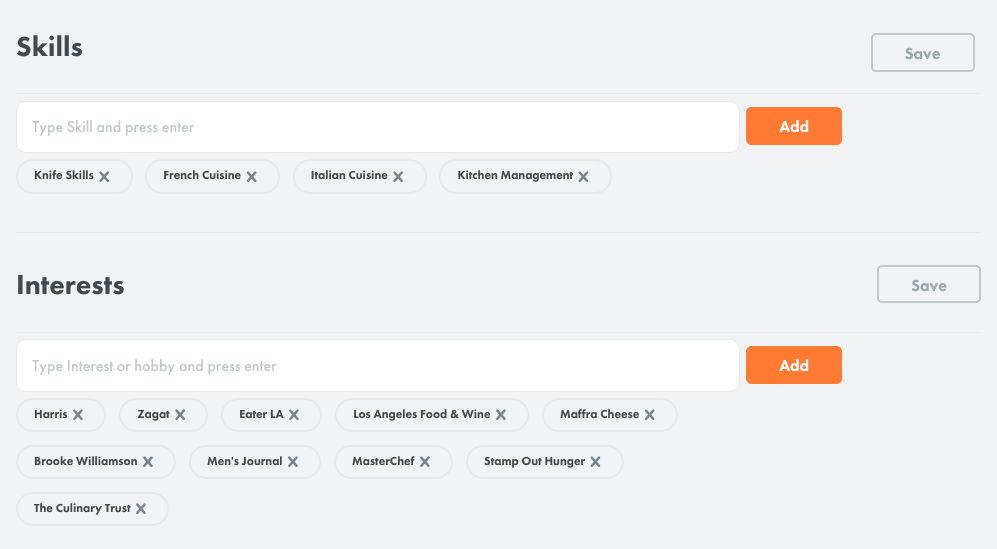Becoming a chef was, and can still be, almost as simple as moving from Point A to Point B. But, it doesn’t have to be! The life-cycle of a chef can as varied and colorful as you make it!
The Truth About Hospitality Turnover
The turnover rate for employees in the restaurants-and-accommodations sector rose for the fourth consecutive year in 2014, though it remains relatively low in historical terms. Restaurant employee turnover is higher than the private sector due to several factors, including higher proportions of teenagers, students and part-year employees in the industry workforce, according to the NRA’s chief economist Bruce Grindy. His Economist’s Notebook commentary and analysis appears regularly on Restaurant.org and Restaurant TrendMapper.
The turnover rate in the hospitality sector rose for the fourth consecutive year in 2014, but remained below pre-recession levels, according to data from the Bureau of Labor Statistics’ Job Openings and Labor Turnover (JOLTS) program.
The overall turnover rate in the restaurants-and-accommodations* sector was 66.3 percent in 2014, up 10 percentage points from the recent low of 56.6 percent in 2010.
Despite the increase, the turnover rate remains relatively low in historical terms. In 2007, prior to the economic downturn, the turnover rate of the restaurants-and-accommodations sector was 80.9 percent. This was generally on par with turnover in the previous five years (2002-2006), when the annual rate averaged 80 percent.
In comparison, the average turnover rate for all private sector workers stood at 44.4 percent in 2014, up four percentage points from the 2010 low but still below the average turnover rate of 50 percent during the 2002 – 2006 period.
The JOLTS program breaks turnover into three components, with the sum of the parts representing the overall turnover rate. The quits rate in the restaurants-and-accommodations sector was 46.5 percent in 2014, while the layoffs-and-discharges rate was 17.2 percent. Other separations, which include retirements, transfers, deaths, and separations due to disability, comprised 2.6 percent of the sector’s turnover rate in 2014.
Most sectors of the economy saw their overall turnover rates decline during the challenging economic environment of 2008 – 2010, as workers were less likely to quit their current jobs with fewer other employment opportunities available. However, the quit rate rose in recent years, which indicates that workers are becoming more confident in the labor market and are willing to jump to another job.
Restaurant industry turnover tends to be higher than overall private sector turnover for a number of reasons. First, the restaurant industry is the economy’s largest employer of teenagers, as one-third of all working teenagers in the U.S. are employed in a restaurant. Many of these 1.5 million teenage restaurant workers are getting their first job experience, and will go on to start a career with a different employer, either inside or outside the restaurant industry.
Second, the restaurant industry employs a high proportion of students, who typically don’t work on a full-year schedule. Twenty-eight percent of eating and drinking place employees are enrolled in school, versus just 11 percent of the total U.S. employed labor force, according to the U.S. Census Bureau’s 2013 American Community Survey (ACS).
The restaurant industry also boosts seasonal staffing levels at various points throughout the year, which adds to the normal cyclical turnover numbers. For example, the restaurant industry is one of the economy’s largest creators of seasonal jobs during the summer months, adding more than 400,000 jobs during an average summer season. Overall, 31 percent of the eating and drinking place workforce are part-year employees, compared to 19 percent of the total U.S. workforce, according to the ACS.
Full-year employees also contribute to the industry’s comparatively higher turnover rate, as upward mobility in the restaurant industry often happens when employees move from one restaurant to another. More than any other industry in the economy, the existence of multiple restaurants in nearly every community gives employees additional opportunities for upward mobility and career growth.
*Note that the turnover figures presented are for the broadly-defined Accommodations and Food Services sector (NAICS 72), because the Bureau of Labor Statistics does not report data for restaurants alone.









